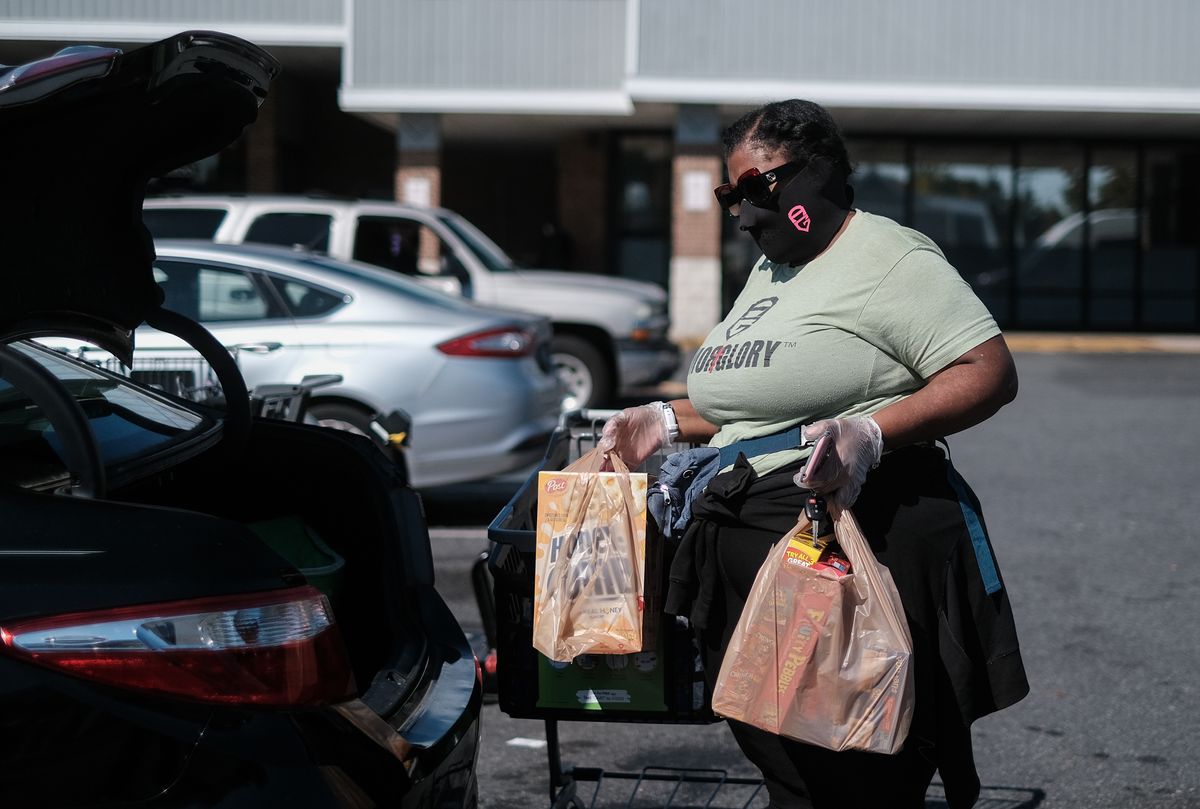How does the Frito-Lay strike relate to the US labor shortage

A few minutes every morning is all you need.
Stay up to date on the world's Headlines and Human Stories. It's fun, it's factual, it's fluff-free.
But in an economy with a worker shortage, the bigger fear would be that workers on strike use the time to look for a different job that provides better benefits, pay or time off.
What happened with the Frito-Lay strike?
- At the beginning of July, several hundred Frito-Lay employees at a plant in Topeka, Kansas, went on strike.
- The workers demanded an end to what they call “suicide shifts,” which are two 12-hour shifts with an eight-hour break between.
- Workers, who were mostly being represented by Local 218 of the Bakery, Confectionery, Tobacco Workers and Grain Millers International Union, said that Frito-Lay (a division of PepsiCo), could easily address the shift problem without hurting the company’s bottom line.
- On July 24, a contract between Local 218 and Frito-Lay was made official, ending the strike.
- According to a member of the union, the contract guarantees one day off per week for workers, and a Frito-Lay statement said that it also includes a four percent raise for all related job groups, as well as “additional opportunities for the union to have input into staffing and overtime.”
- Union leaders called the strike, “a testament to the tenacity and grit of the Frito-Lay workers in Topeka,” but some workers have said that the result could be better but the strike needed to end because they were running out of money.
What’s the deal with unemployment?
- The pandemic caused significant unemployment, going from 3.5% unemployment in February of 2020 to 14.8% unemployment only two months later.
- The unemployment rate in June this year is much lower at 5.9%, according to the Labor Force Statistics from the Current Population Survey conducted by the United States Bureau of Labor Statistics, but it’s still higher than it was before the pandemic.
- But in recent months, companies globally have said they’re having a hard time hiring.
- Manufacturing companies hiring unskilled workers and banks and credit unions hiring skilled ones are facing the same problem; people just aren’t applying for jobs.
- And, the problem has become a lot bigger because of shortages of the goods and services being provided by companies. For example, nationwide lumber shortages lasted months, and the prices of everyday goods have gone up due to supply chain mismatches.
What’s causing the labor shortage?
- Well, so here’s the thing. The answer depends on who you ask.
- Republican leaders in 25 states, along with one state run by Democrats, are cutting the additional US$300 weekly federal unemployment benefits, saying that the higher unemployment benefits are keeping people from returning to the workforce.
- But so far, it doesn’t look like cutting unemployment benefits has helped increase employment in those states.
- One study by Arindrajit Dube, an economics professor at the University of Maryland Amherst, found that in the 12 states that cut the additional benefits on either June 12 or 19 have not seen an increase in employment.
- The study found that employment rates actually dropped slightly in those states.
- Dube made clear though that the findings were short-term results, but based on what he found, a decrease in those receiving unemployment benefits did not seem to translate to an increase in overall employment rates.
So, what’s the reason?
- There are several reasons it seems that people aren’t returning to work that have nothing to do with unemployment benefits.
- The two big ones seem to be that people are looking for better working conditions and pay (including opportunities for promotion), and that they’re looking for workplace flexibility to allow workers to balance family obligations.
- Balancing family obligations is particularly important to get mothers to return to the workforce.
- 96% of unemployed mothers said that balancing family needs is one of the most important or a very important factor in choosing a job.
What’s that have to do with the strike?
- A labor shortage like this can put pressure on employers to ensure they don’t lose their employees.
- In a normal strike, the typical loss for an employer would be whatever work didn’t get done while workers were striking.
- In the case of Frito-Lay, this would mean losses in bags of chips not made and therefore sold, and ingredients that maybe go bad because they weren’t used in time.
- But, in an economy with a worker shortage, the bigger fear would be that workers on strike use the time to look for a different job that provides better benefits, pay or time off.
- If those workers never return to work, it’s a lot harder to recruit new workers, and the problem of lost work is multiplied, which would definitely hurt the company’s bottom line. On top of that, hiring new employees costs money too because of the cost of training and equipment.
What’s next?
- There’s no doubt that the success of the strike is a win for workers’ rights, considering recent losses for unions like the lost Amazon union vote in Alabama in April.
- But it isn’t yet clear if strikes amid the worker shortage will be effective nationwide.
- Some of the labor shortage problems are geographic, with people having moved out of big cities during the pandemic. And in some cases, there might not be opportunity to swap jobs if striking workers need to.
- The other thing to watch out for is what happens when students return to school in the fall and whether that encourages unemployed mothers to return to the workforce.
- Ultimately, the Frito-Lay strike is a single data point, but it’s also a clear step in the direction of better rights for workers.
Have a tip or story? Get in touch with our reporters at tips@themilsource.com




Comments ()